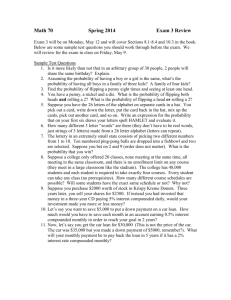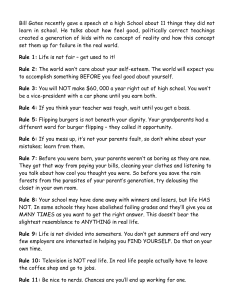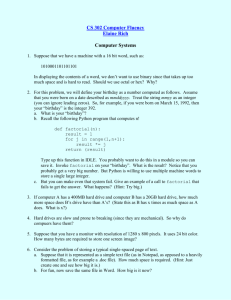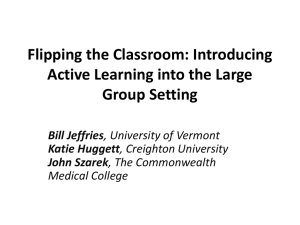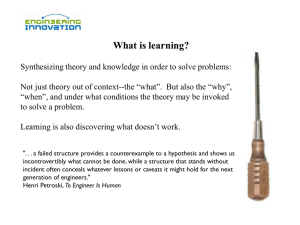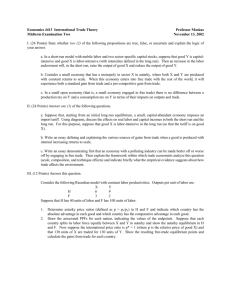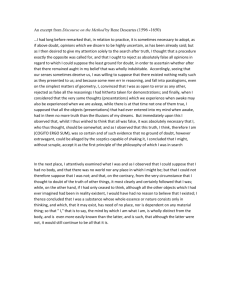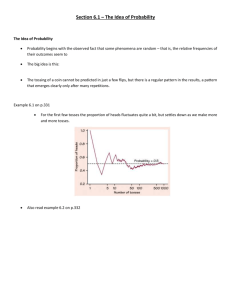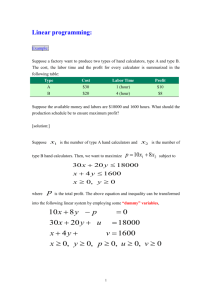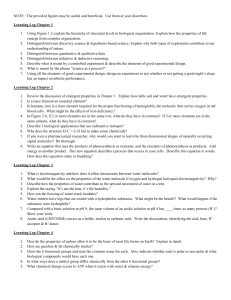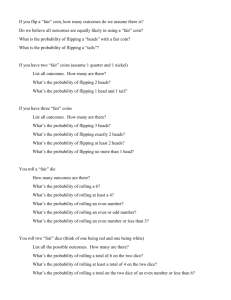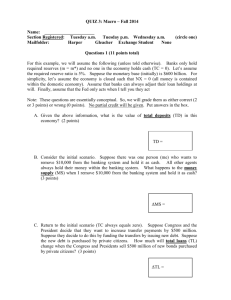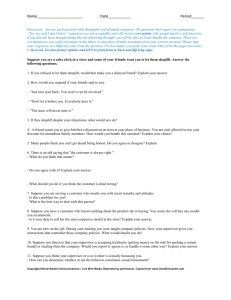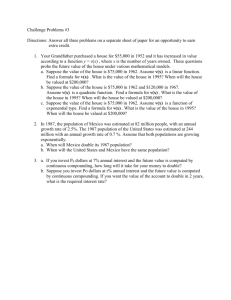Math 70 - Fog.ccsf.edu
advertisement
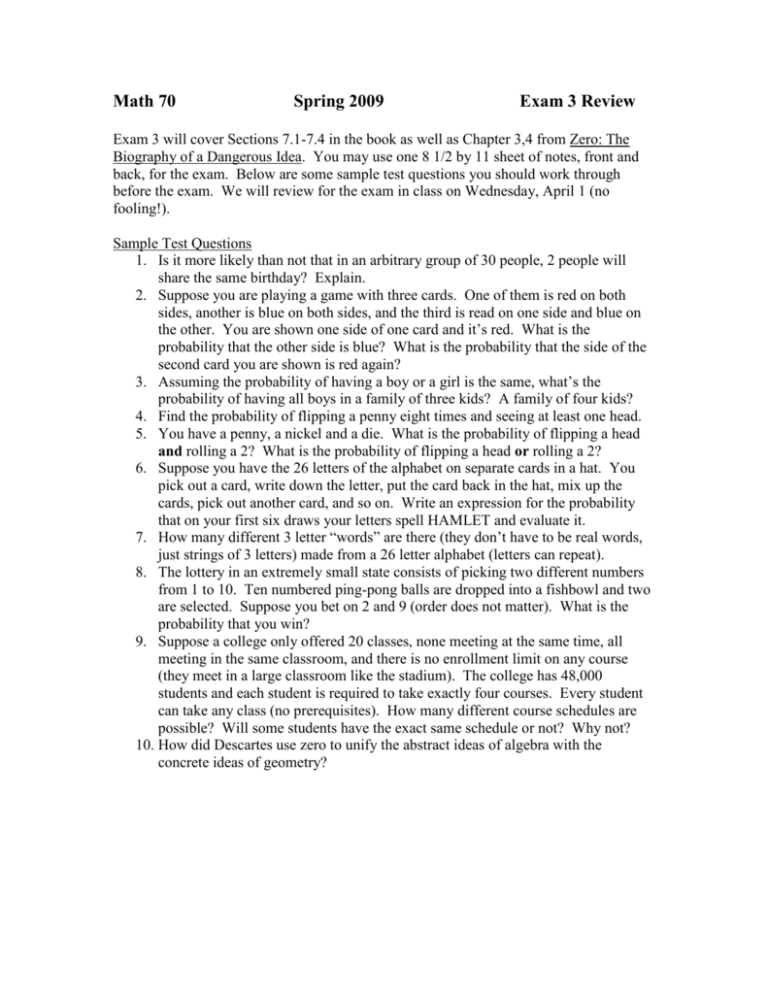
Math 70 Spring 2009 Exam 3 Review Exam 3 will cover Sections 7.1-7.4 in the book as well as Chapter 3,4 from Zero: The Biography of a Dangerous Idea. You may use one 8 1/2 by 11 sheet of notes, front and back, for the exam. Below are some sample test questions you should work through before the exam. We will review for the exam in class on Wednesday, April 1 (no fooling!). Sample Test Questions 1. Is it more likely than not that in an arbitrary group of 30 people, 2 people will share the same birthday? Explain. 2. Suppose you are playing a game with three cards. One of them is red on both sides, another is blue on both sides, and the third is read on one side and blue on the other. You are shown one side of one card and it’s red. What is the probability that the other side is blue? What is the probability that the side of the second card you are shown is red again? 3. Assuming the probability of having a boy or a girl is the same, what’s the probability of having all boys in a family of three kids? A family of four kids? 4. Find the probability of flipping a penny eight times and seeing at least one head. 5. You have a penny, a nickel and a die. What is the probability of flipping a head and rolling a 2? What is the probability of flipping a head or rolling a 2? 6. Suppose you have the 26 letters of the alphabet on separate cards in a hat. You pick out a card, write down the letter, put the card back in the hat, mix up the cards, pick out another card, and so on. Write an expression for the probability that on your first six draws your letters spell HAMLET and evaluate it. 7. How many different 3 letter “words” are there (they don’t have to be real words, just strings of 3 letters) made from a 26 letter alphabet (letters can repeat). 8. The lottery in an extremely small state consists of picking two different numbers from 1 to 10. Ten numbered ping-pong balls are dropped into a fishbowl and two are selected. Suppose you bet on 2 and 9 (order does not matter). What is the probability that you win? 9. Suppose a college only offered 20 classes, none meeting at the same time, all meeting in the same classroom, and there is no enrollment limit on any course (they meet in a large classroom like the stadium). The college has 48,000 students and each student is required to take exactly four courses. Every student can take any class (no prerequisites). How many different course schedules are possible? Will some students have the exact same schedule or not? Why not? 10. How did Descartes use zero to unify the abstract ideas of algebra with the concrete ideas of geometry? Answers to Sample Test Questions 1. More likely than not. We saw in class that in a group of 23 people, there was a 50% chance that 2 people will share a birthday and as we added more people into the group, the probability went up. 1 2 2. , 2 5 1 1 3. , 8 16 255 0.996 4. 256 1 7 , 5. 2 24 1 6 1 6. 26 308,915,776 3 7. 26 17,576 1 8. 45 9. 4,845 different schedules. Yes, at least 10 students must have the same schedule by the Pigeonhole Principle (remember me?) 10. He created the Cartesian coordinate system with the number zero as the origin.
